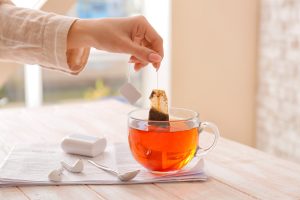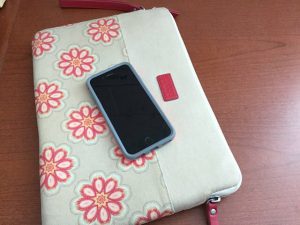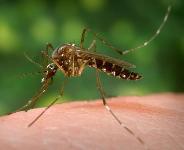
by Marie Arick | Jun 24, 2024

(Photo source: Marie Arick)
A great beach outing includes more than just grabbing the sunscreen and a towel on the way out the door. A bit of quick planning can really aid with a successful beach outing that doesn’t require too much effort.
Staying hydrated is important. Freezing bottles of water, sports drinks or fruit drink pouches is one trick to packing a smaller cooler or an insulated grocery bag. It is dual purpose. It can aid with keeping snacks (apple slices or watermelon in resealable bags) cool and when melted, a cool drink to enjoy.
Snacks are a also good idea. Fruit, animal crackers, or pretzels are easily packed and not too difficult to manage. Another tip is to bring a trash bag to keep the beaches clean and to limit your trips to the public waste receptacle.
Sunscreen is a necessity even on a cloudy day. A sun protection factor (SPF) of 15 or more by is recommended by the U.S. Food and Drug Administration (FDA). Applying sunscreen before leaving home allows time for adequate absorption into the skin. Remember to reapply at least every 2 hours. Using an umbrella or a tent is a great way to escape the sun’s direct rays. Wearing a hat or other protective clothing can help protect from those harmful UV rays.
Have kiddos? Bringing a few toys to aid with building sandcastles keeps the creative mind going. A few simple safety rules for playing in the sand are: do not bury one another in the sand, avoid throwing sand at anyone as it could harm one’s eyes, and avoid digging deep holes. Safety is paramount and an article published in the New England Journal of Medicine by a Harvard Medical School researcher noted burying a person in the sand is dangerous as the weight of the sand may lead to suffocation. As recently as February 2024, at Lauderdale by the Sea, two children were involved in a beach hole collapse, as reported in the Miami Herald. While digging in the sand is fun, be mindful and create structures that are safe for the kids.
Finally, know your beach flags and where to locate the current beach conditions. The National Weather Service as well as the MOTE Marine Laboratory are great sites providing beach conditions, including water current risk level, UV index, and thunderstorm potential. Local beaches often have social media pages that provide specific data for that area, including the current conditions and flags. Remember, not all beaches post flags and not all beaches have lifeguards on duty.
A day at the beach is an excellent opportunity for a fun-filled day. While this may not be an inclusive list, it does cover many of the basics of a good beach day. Spending a few minutes to determine the beach outlook, gathering the day’s supplies, and following some safety rules can greatly enhance your beach day.
An Equal Opportunity Institution.

by Dorothy C. Lee | Apr 19, 2024
Tea dates back thousands of years and spans numerous continents and civilizations. Tea contains antioxidants known as catechins and flavonoids. Antioxidants work to neutralize free radicals, which are formed when cells burn oxygen for energy.

Photo by Adobe Stock
Researchers from the USDA reported laboratory tests found tea produces greater antioxidants than numerous commonly consumed vegetables. Results of several studies suggest that tea has potential protective effects against certain types of cancers. Several studies also have suggested that tea drinking may reduce the risk of cardiovascular disease.
There are many reasons for making tea, the second most consumed beverage worldwide, surpassed only by water, and part of a healthful lifestyle. Just as consuming fruits and vegetables daily provides vitamins, minerals, and fiber, drinking tea may help boost antioxidant intake.
Also, tea contributes to daily fluid intake, vital for the maintenance of fluid balance. Much of tea’s popularity can be attributed to its distinctive taste, aroma, and versatility. The health benefits of consuming tea suggest that it is a nutritionally healthy beverage choice. Whether you prefer tea hot or iced, it can be an important part of a healthy diet.
So, go ahead and brew up that cup of hot tea or a glass of iced tea and join the celebration of National Tea Day, April 21, 2024.
Tea Tidbits
On average, an 8-ounce cup of tea contains fifty milligrams of caffeine, about half the amount in coffee. The longer the brewing time, the more caffeine is in the tea.
Over 3.9 billion gallons of hot, iced, spiced, and flavored tea are consumed by Americans every year.
In the United States, Americans drink 80 percent of their tea over ice.

by Melanie Taylor | Sep 29, 2021
Until July 2, 2021, I felt confident I had done everything possible to stay safe and avoid contracting Covid-19. Throughout 2020 and well into 2021, I worked from home, socialized very little, quarantined when necessary, wore my mask, and constantly washed my hands. In fact, I may have dry skin on my hands for the rest of my life, but I still wash my hands frequently. The Covid-19 virus has become a controversial issue over the past two years, but my story is from real experience.

Keeping your fever under control is a necessity when battling Covid-19. Photo credit: Melanie Taylor
As I prepared to have a safe, but fun, Fourth of July weekend with a few vaccinated friends, I was winding down my Friday at work and started to feel achy. I headed home, excited for a 3-day weekend, but I still felt like I was dragging. My husband and I had plans to meet up with friends at a restaurant with outdoor seating, but before I left the house, I decided to take my temperature, just to be cautious. To our surprise, I had a fever of 99.9. We canceled our dinner plans and I took some acetaminophen, went to bed early, and we prayed it was not Covid-19. It was kind of an unspoken prayer because neither of us wanted to admit we were a little nervous about my symptoms. As the weekend carried on, I felt sicker as the hours and days went by and barely left the sofa or bed. On Sunday morning, I woke up with a bad dry, hard cough so my husband called my doctor. To be totally transparent, I am immunocompromised, so we both knew there was a chance I could have a breakthrough case even though I was vaccinated. Based on my symptoms, my doctor recommended I go to the emergency room and be evaluated since it was a 3-day weekend. I followed his directions, had a chest x-ray, which, thankfully, was clear, but I tested positive for Covid-19.
Let me honestly say, this was the sickest I had ever felt in my memories. For about twelve straight days, I laid on the sofa, took my temperature and oxygen levels, had no sense of taste or smell, ate food with no taste to keep up my strength, hydrated, and slept. The body aches, fever, dry cough, and fatigue were debilitating. I had every Covid-19 symptom listed by the CDC except for a headache. I thought to myself many times how bad and scary this could have been if I had not been vaccinated. My doctor clearly expressed his opinion that if I had been unvaccinated, I would have been hospitalized, no questions asked. Unlike many people, it was not recommended for me to take a regimen of pills or vitamins, so I fought it with acetaminophen, lots of hydration, healthy foods, and tons of rest. When I finally woke up on July 14th and could smell the coffee brewing, I knew the end was finally in sight. It still took two more weeks to feel and return to normal, and I knew firsthand this virus is no joke.
Like many of you, I know people that have tested positive and showed no symptoms, some that felt very sick but were able to stay home and recover, and some that never made it home from the hospital. I work in the field of science as a UF/IFAS Extension Agent and feel very strongly that we can all make simple efforts to reduce exposure to ourselves and others. The most important step is to pay attention to the symptoms and stay home if we suspect illness or exposure. Even though I was looking forward to the holiday festivities, I made a conscious decision to stay home on July 2nd just in case I really was positive with Covid-19. I wanted to keep my friends and family safe just in case there was a remote chance I was contagious. I feel very grateful I did not expose them to this virus.

Checking your oxygen levels while sick with Covid-19 is a must. Photo credit: Melanie Taylor
The positive cases in Florida are lower right now, and that is fantastic. I am very excited about it too, but I also know we still shouldn’t put our guard down. Please stay aware. Be aware if you or a family member(s) have been exposed or do not feel well, and check for symptoms. I highly recommend every American household have a reliable thermometer, a pulse oximeter (safe oxygen levels should not go lower than 92), fluids for hydration, and foods of different textures because eating food without being able to taste and smell is very difficult. Different food temperatures, spice levels, and textures made eating to keep up my strength easier for me to handle.
The past two years have been stressful, emotional, and very exhausting. We still cannot forget to stay aware and diligent in our everyday lives to keep our families, friends, and communities healthy. Please revisit these CDC websites as needed and always consult your doctor when you have questions and concerns. Stay aware and healthy out there!
https://www.cdc.gov/coronavirus/2019-ncov/your-health/index.html\
https://www.cdc.gov/coronavirus/2019-ncov/symptoms-testing/symptoms.html
https://www.cdc.gov/coronavirus/2019-ncov/prevent-getting-sick/index.html
https://www.cdc.gov/coronavirus/2019-ncov/testing/index.html
https://www.cdc.gov/coronavirus/2019-ncov/if-you-are-sick/index.html
https://www.cdc.gov/coronavirus/2019-ncov/need-extra-precautions/people-with-medical-conditions.html

by Melanie Taylor | Nov 24, 2020
2020 has been a year of many changes and challenges due to the Coronavirus pandemic, which unfortunately will continue into our holiday season. To protect our friends, family and community members we must continue following the science-based guidelines provided by the Centers for Disease Control and Prevention (CDC) and your state and local guidelines to prevent exposure and the spread of the virus.
Unfortunately, the Covid-19 epidemic numbers are rising again. Gatherings of any kind, both small and large, are contributing to the rise in positive cases. We can all make choices based on the scientific research that can protect us and others by making small changes in our 2020 holiday celebrations. Limiting the risk and being diligent in our actions should be our main goal until a vaccine is approved and dispersed throughout the country.

Holiday Dinner
Photo Source: UF/IFAS
Some unique and easy ways to celebrate the holidays this year are to “gather virtually” with those not in your immediate household or to gather in-person only with members of your own household. These two types of gatherings offer the lowest risk for spreading the virus. Your household is anyone who currently lives and shares common spaces in your home. People who do not currently live in your home, such as college students who are returning home from school for the holidays, should be considered part of different households. In-person gatherings that bring together family members or friends from different households, including those college students returning home, offer varying levels of risk. The level of risk is difficult to determine because people may have been exposed and/or are a carrier and may not be aware of it.
Here are some specific things to consider when deciding how to celebrate your holidays.
- Number of cases in your community – Be sure to know the number of positive Covid cases in your community. If the numbers are rising or are already high you should take precautions based on the data. You can check your specific county or city Covid rates at your local health departments website.
- Exposure during travel – Airports, bus stations, train stations, public transport, gas stations, rest stops and hotels are all places travelers can be exposed to the virus in the air and on surfaces. Be aware if you will be traveling or if you have guests traveling to your home.
- Location of your gathering – Indoor gatherings, especially those with poor ventilation, expose your family to more risk than outdoor gatherings.
- How long will your gathering last? – Time is an important factor to consider. The longer the gathering lasts the more risk those attendees will have of being exposed. Being within 6 feet of someone who has Covid for a cumulative total of 15 minutes or more greatly increases the risk of becoming sick and requires a 14-day quarantine.
- Number and crowding of people at the gathering – Gatherings with more people bring more risk than gatherings with fewer people. The size of a holiday gathering should be determined based on the ability of attendees from different households to stay 6 feet (2 arm lengths) apart, wear masks, wash hands and follow state, local, territorial, or tribal health and safety laws, rules and regulations.
- Behaviors of attendees before the gathering – People who do not consistently follow social distancing, wearing masks, regular handwashing and other prevention behaviors cause more risk than those who consistently practice the recommended safety measures.
- Behaviors of attendees during the gathering – Gatherings with more safety measures in place, such as mask wearing, social distancing and handwashing, offer less risk than gatherings where fewer or no preventive measures are being implemented. Use of alcohol or drugs may alter judgment and may make it more difficult to practice Covid safety measures.

Be sure your technology is charged and ready for your virtual holiday visit. Photo Source: Kendra Zamojski
Other high-risk holiday related activities to avoid to help prevent the spread of the virus:
- Going shopping in crowded stores.
- Participating or being a spectator at a crowded parade, race or other holiday celebration.
- Attending large indoor gatherings with people from outside of your household.
- Using alcohol or drugs that may alter judgment and make it more difficult to practice Covid safety measures.
Things to consider before your gatherings:
To make the holiday less stressful be sure to practice a virtual session before the virtual holiday gathering. Make sure everyone involved knows how to connect to the virtual holiday celebration so the gathering will go more smoothly and hopefully experience less technical problems on that day.
We all had to adapt to many unexpected changes this year and the holidays will be no different. Just remember being diligent now will protect family and friends and help control the spread of the virus in our communities. Be sure to enjoy your unique holiday season this year, but here’s hoping for a less challenging 2021.
Stay safe! Enjoy your family and friends from a safe distance! Happy Holidays!
Source:
CDC: https://www.cdc.gov/coronavirus/2019-ncov/daily-life-coping/holidays.html

by Kendra Hughson | Mar 26, 2020

Mosquito Aedes Aegypti_2020
Photo Source: UF/IFAS
Author: Whitney Cherry
COVID-19 has been driving public and private discussion as of late. But, we have to stay vigilant in working against all public health threats. One of the threats we typically start talking about this time of year is mosquito borne illnesses and preventative mosquito control. Not only are mosquitoes pests, but they can transmit some diseases we wouldn’t want, even under normal circumstances.
So what’s the reality? While the incidence of mosquito borne illness is much lower with the advent of modern medicine and basic public practices of wearing bug spray and dumping or treating standing water, it’s definitely not unheard of. The Zika scare is not such a distant memory afterall. And EEE (eastern equine encephalitis) was at an unusual high last year in horses in the panhandle. So what can we do?
With recent flooding in some areas and the weather warming, we can expect to see increasing populations of mosquitoes. Additionally, as the weather warms, we all tend to spend more time outside, increasing our likelihood of mosquito bites. Further exacerbating the situation are the widespread quarantine measures keeping many of us home. The late afternoon and early evening hours bring ideal weather to step outside and enjoy a little time away from TV and computer screens. We encourage fresh air and exercise outdoors, but we also encourage basic safety. So wear bug spray if you’re outside early morning and especially near, during, or shortly after dusk. Wear long sleeves and pants and socks if you can stand it. And keep standing water out of containers on your property. If this isn’t possible, look for safe water treatment options. The most prevalent spreaders of disease (Aedes aegypti) actually require these containers of water to complete their life cycle.
For more information on this or other Extension-related topics, call or email your local extension office.
Related mosquito information: http://edis.ifas.ufl.edu/results.html?q=mosquito+borne+illness&x=0&y=0#gsc.tab=0&gsc.q=mosquito%20borne%20illness&gsc.page=1












